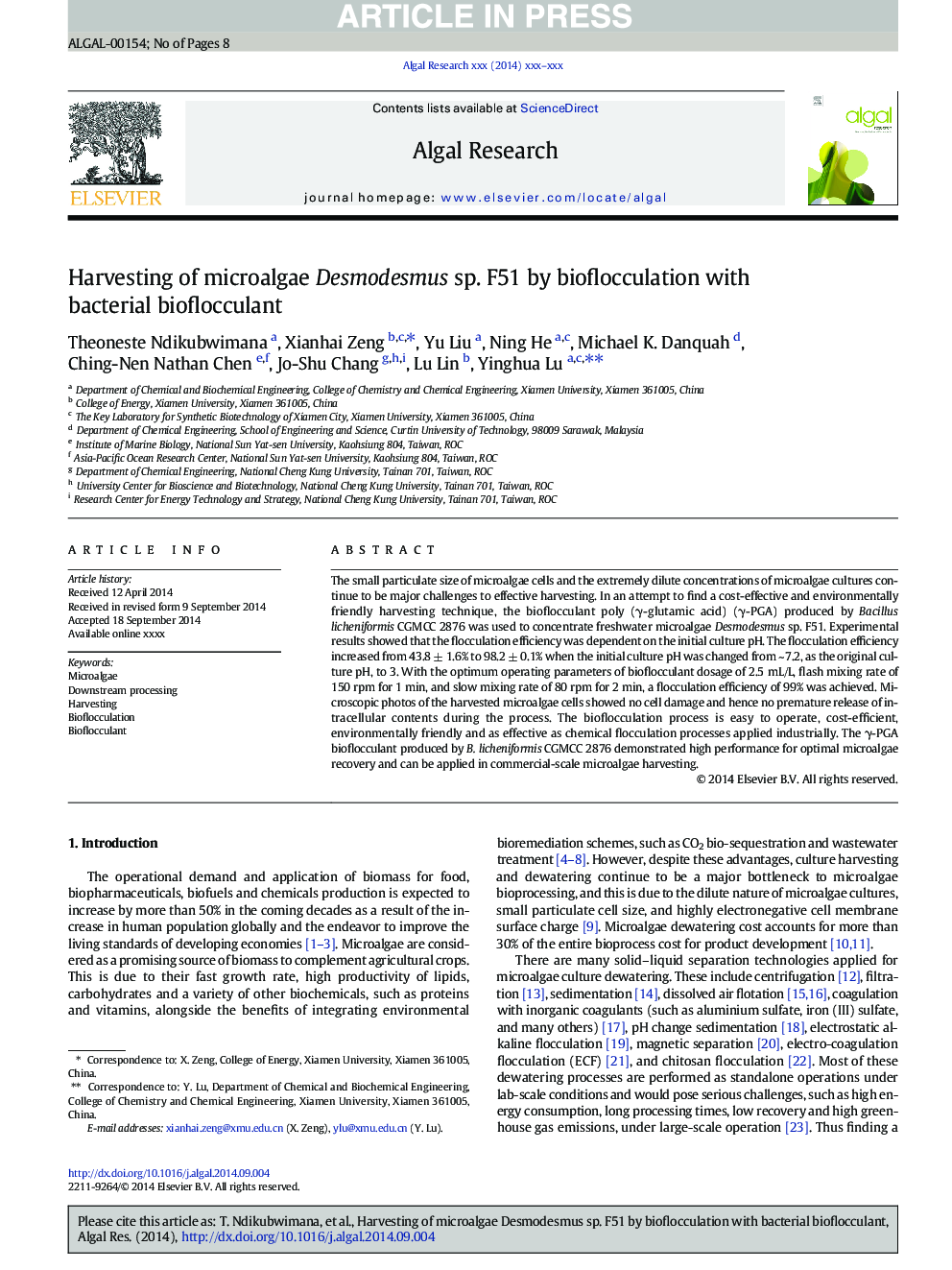| Article ID | Journal | Published Year | Pages | File Type |
|---|---|---|---|---|
| 10687514 | Algal Research | 2014 | 8 Pages |
Abstract
The small particulate size of microalgae cells and the extremely dilute concentrations of microalgae cultures continue to be major challenges to effective harvesting. In an attempt to find a cost-effective and environmentally friendly harvesting technique, the bioflocculant poly (γ-glutamic acid) (γ-PGA) produced by Bacillus licheniformis CGMCC 2876 was used to concentrate freshwater microalgae Desmodesmus sp. F51. Experimental results showed that the flocculation efficiency was dependent on the initial culture pH. The flocculation efficiency increased from 43.8 ± 1.6% to 98.2 ± 0.1% when the initial culture pH was changed from ~ 7.2, as the original culture pH, to 3. With the optimum operating parameters of bioflocculant dosage of 2.5 mL/L, flash mixing rate of 150 rpm for 1 min, and slow mixing rate of 80 rpm for 2 min, a flocculation efficiency of 99% was achieved. Microscopic photos of the harvested microalgae cells showed no cell damage and hence no premature release of intracellular contents during the process. The bioflocculation process is easy to operate, cost-efficient, environmentally friendly and as effective as chemical flocculation processes applied industrially. The γ-PGA bioflocculant produced by B. licheniformis CGMCC 2876 demonstrated high performance for optimal microalgae recovery and can be applied in commercial-scale microalgae harvesting.
Related Topics
Physical Sciences and Engineering
Energy
Renewable Energy, Sustainability and the Environment
Authors
Theoneste Ndikubwimana, Xianhai Zeng, Yu Liu, Jo-Shu Chang, Yinghua Lu,
